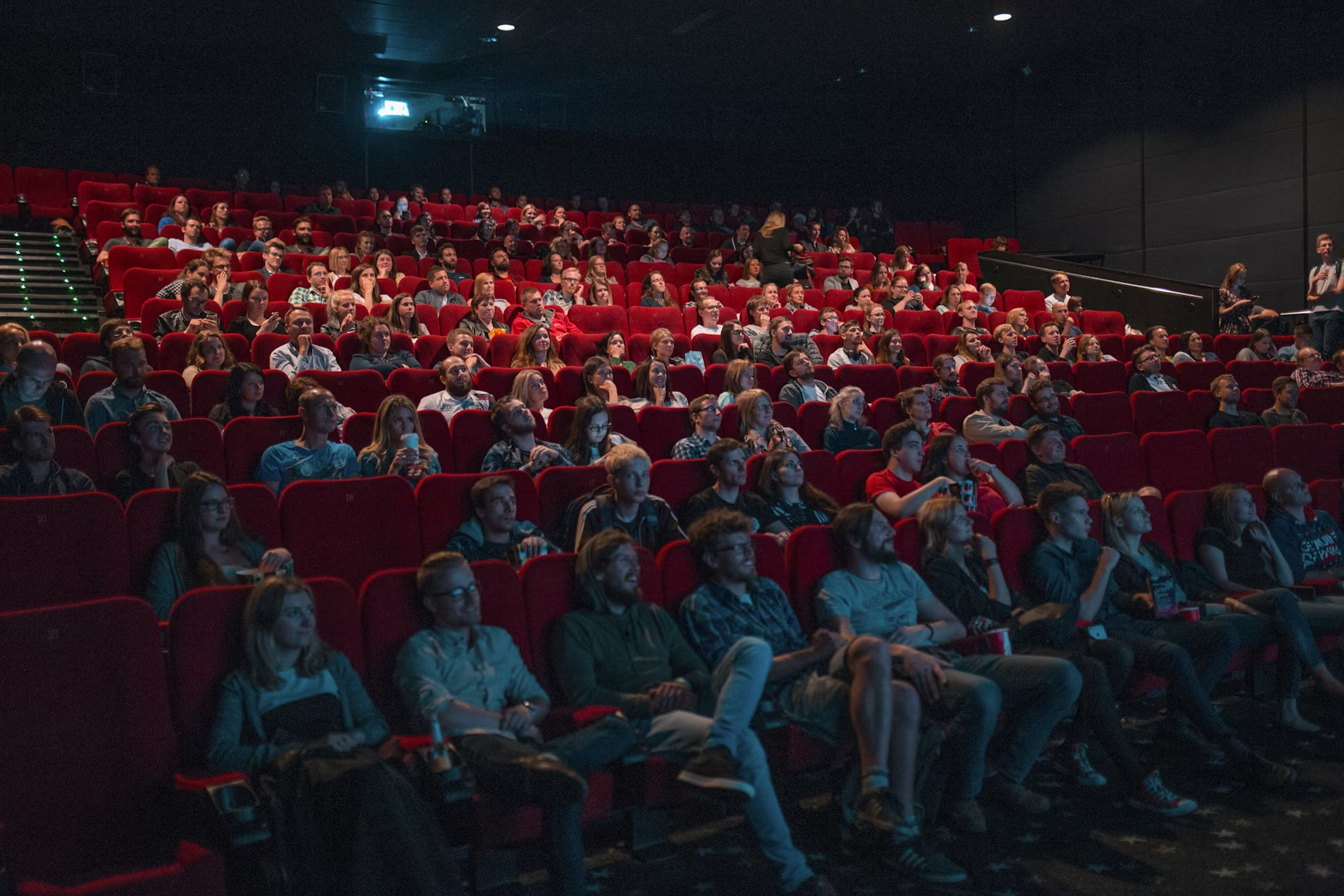Cinema Advertising : How Much Does It Cost and Is It Worth It?
Cinema advertising includes any ads posted inside or outside movie theaters that people can see when they go to a film.
What Is Cinema Advertising?
Cinema advertising refers to any promotional content placed inside or around movie theaters that audiences encounter before, during, or after a film. The most prominent format is pre-movie commercials shown on the big screen, but brands can also leverage poster placements, digital displays in lobbies, and messaging in concession areas.
On-screen ads remain the star attraction in cinema advertising, thanks to their full-screen impact and guaranteed attention. Typically running between 15 and 30 seconds, these ads play before movie trailers begin, ensuring high visibility while viewers are seated and focused. With bold visuals and emotionally charged content, brands can leave a memorable impression on an engaged audience.

Cinema advertising engages a focused audience right before the show begins—ensuring your brand is seen and remembered.
What Are the Advantages of Advertising in Cinema?
According to the Motion Picture Association of America, about 75% of Americans over age 2 attend the movies at least once a year, and 24 million do so every week. That’s a broad and loyal audience—making cinema one of the most effective out-of-home advertising environments available.
Key advantages include:
- Captive audience: With minimal distractions and a dark, immersive setting, your ad gets undivided attention.
- Positive mindset: Moviegoers are relaxed and receptive, which increases emotional engagement with your brand message.
- Appealing demographics: Theaters attract teens and millennials in large numbers—ideal for targeting younger, trend-driven consumers.
Cinema advertising also pairs well with campaigns that aim to spark buzz or connect emotionally with an audience. For ideas, check out our roundup of standout OOH advertising campaigns.
What Is the Price of Movie Advertising?
Cinema ad rates start at around $2,500 for a four-week run in a single theater. That base price can climb depending on the film’s popularity, theater location, and market demand—especially for major studio releases.
Still, the pricing is highly competitive compared to other formats. For example, it’s often more cost-effective than large-scale activations like train advertising while delivering comparable exposure. It also rivals the cost of mall advertising, making it ideal for regional or niche targeting.
Movie theater advertising offers an affordable, high-impact solution for brands seeking visibility without overstretching their budget.
How to Target Movie Advertising
Cinema ads can be precisely targeted to the right audiences in several smart ways:
- Geographic and demographic targeting: Choose theaters in neighborhoods aligned with your audience—such as urban centers with large Gen Z populations or suburban areas with young families.
- Movie genre and selection: Tailor campaigns to match the tone of the film. For example, advertise athletic gear during a sports documentary or promote beauty products during a music-focused film like the Billie Eilish documentary.
Blockbuster titles like Marvel films draw massive foot traffic, which may justify higher placement costs due to broader exposure.
Creative for Movie Ads
To thrive in the cinematic setting, your ad must balance strong visuals with storytelling that resonates. Pre-movie screen ads offer a unique creative canvas—some brands repurpose TV spots, but many design bespoke content tailored for the big screen experience.
Even static creative can work well in theater lobbies or digital concession screens when it’s visually sharp and easy to digest. Just be sure to submit your materials at least 72 hours before launch to avoid delays in scheduling or playback.
How Long Are Cinema Ads?
The pre-movie sequence typically includes 15 to 20 minutes of trailers and ads. Within this, individual cinema ads can range from 15 seconds to 2 minutes, depending on your objectives and budget.
Blockbusters tend to have more pre-show content, creating even more chances for ad placement and repeated brand exposure.
Where Can You Purchase Cinema Advertising?
Cinema advertising is available nationwide and fits both regional and national campaigns. While New York, LA, and Chicago offer unmatched scale, smaller markets often come with better rates and niche targeting.
Looking to stretch your campaign across multiple theaters or cities? Many vendors offer discounted packages when you buy in bulk.
Cinema Ad Options: Costs, Placements, and Best Uses
| Ad Format | Typical Cost | Placement | Best For |
|---|---|---|---|
| On-Screen Video | $200–$2,000 per week | Before previews & feature | High impact, storytelling |
| Still Slides | $50–$300 per week | Pre-show rotation | Budget-friendly exposure |
| Lobby Posters | $100–$500 per month | High-traffic lobby areas | Brand awareness campaigns |
| Digital Displays | $250–$1,500 per month | Concessions & entryways | Capturing attention during wait times |
Cinema Advertising FAQ
How much does cinema advertising cost?
Cinema advertising costs vary by location, theater chain, and ad length. On-screen ads typically start from a few hundred dollars per week.
What types of ads can run in movie theaters?
Common formats include on-screen video ads, still slides, lobby posters, standees, and digital displays placed in theater common areas.
How effective is cinema advertising?
Cinema ads are highly effective because audiences are undistracted, seated, and attentive before the movie begins, leading to strong recall rates.
Can local businesses advertise in cinemas?
Yes, many theaters offer packages tailored for local businesses, allowing them to target audiences in their immediate community.
When are cinema ads shown?
Cinema ads are usually shown before the previews and feature presentations, ensuring audiences are seated and paying attention.
Contact us For Cinema Advertising
Ready to build a high-impact cinema campaign? Contact DASH TWO and let us help you put your message on the big screen.
